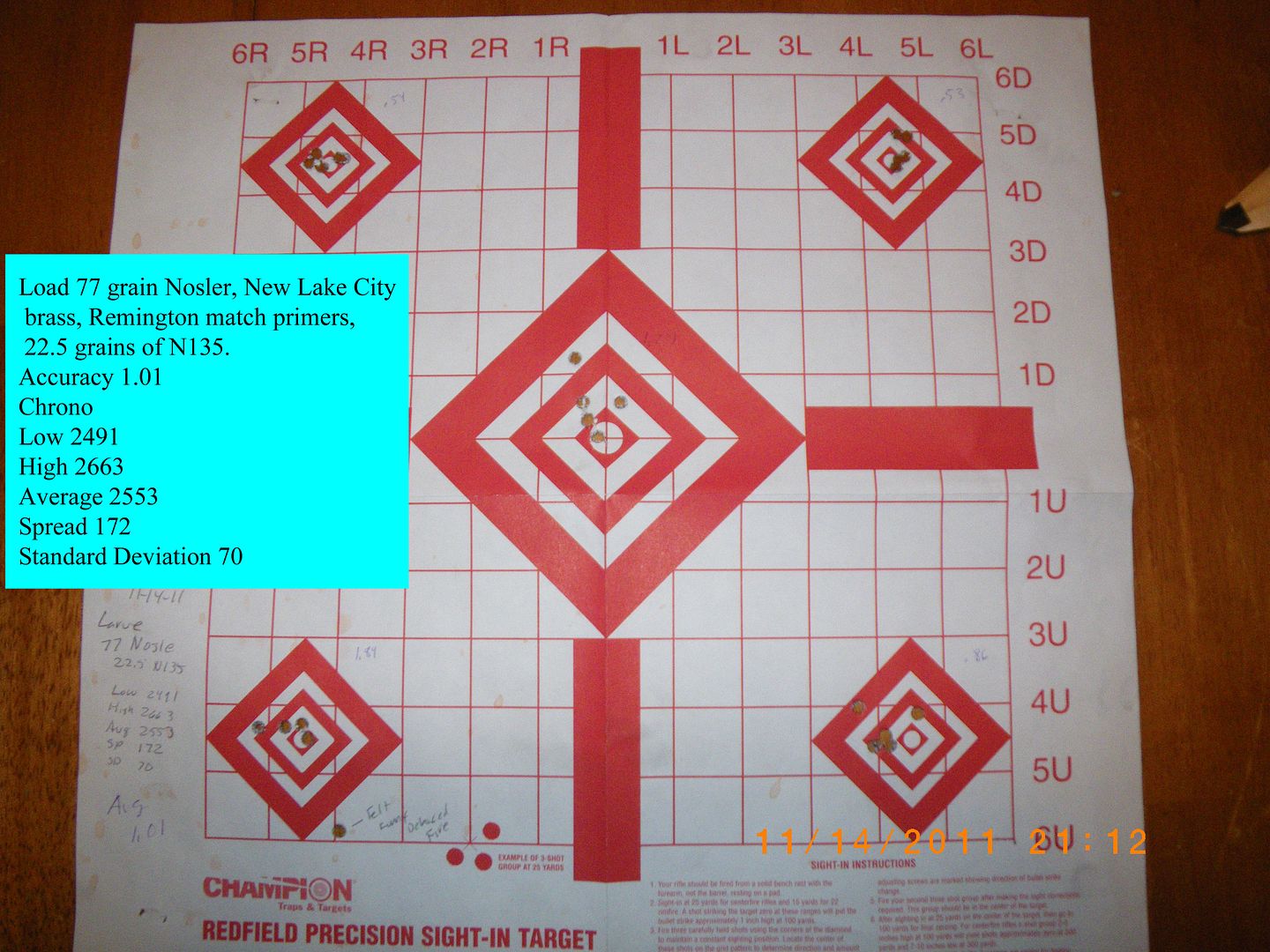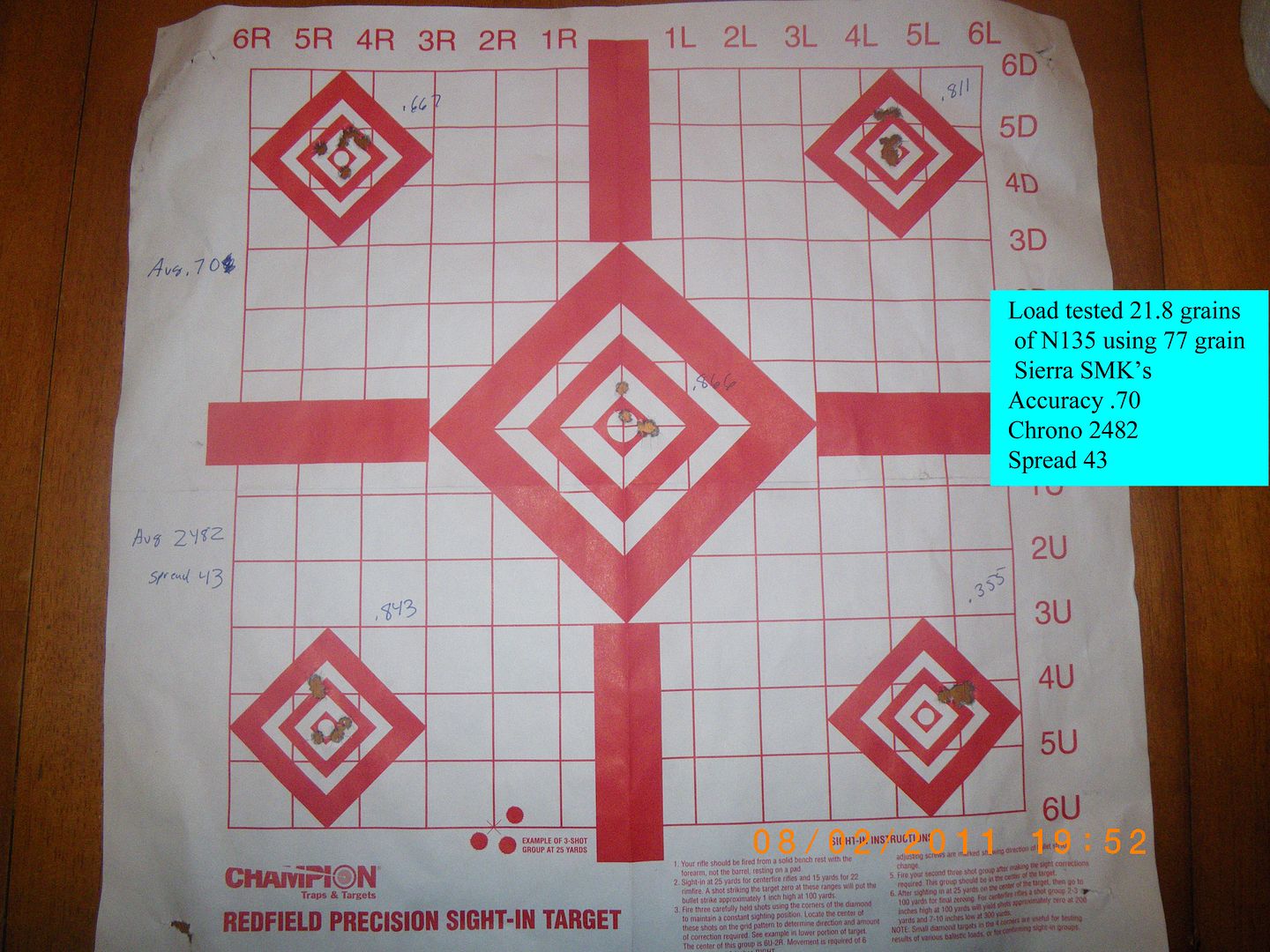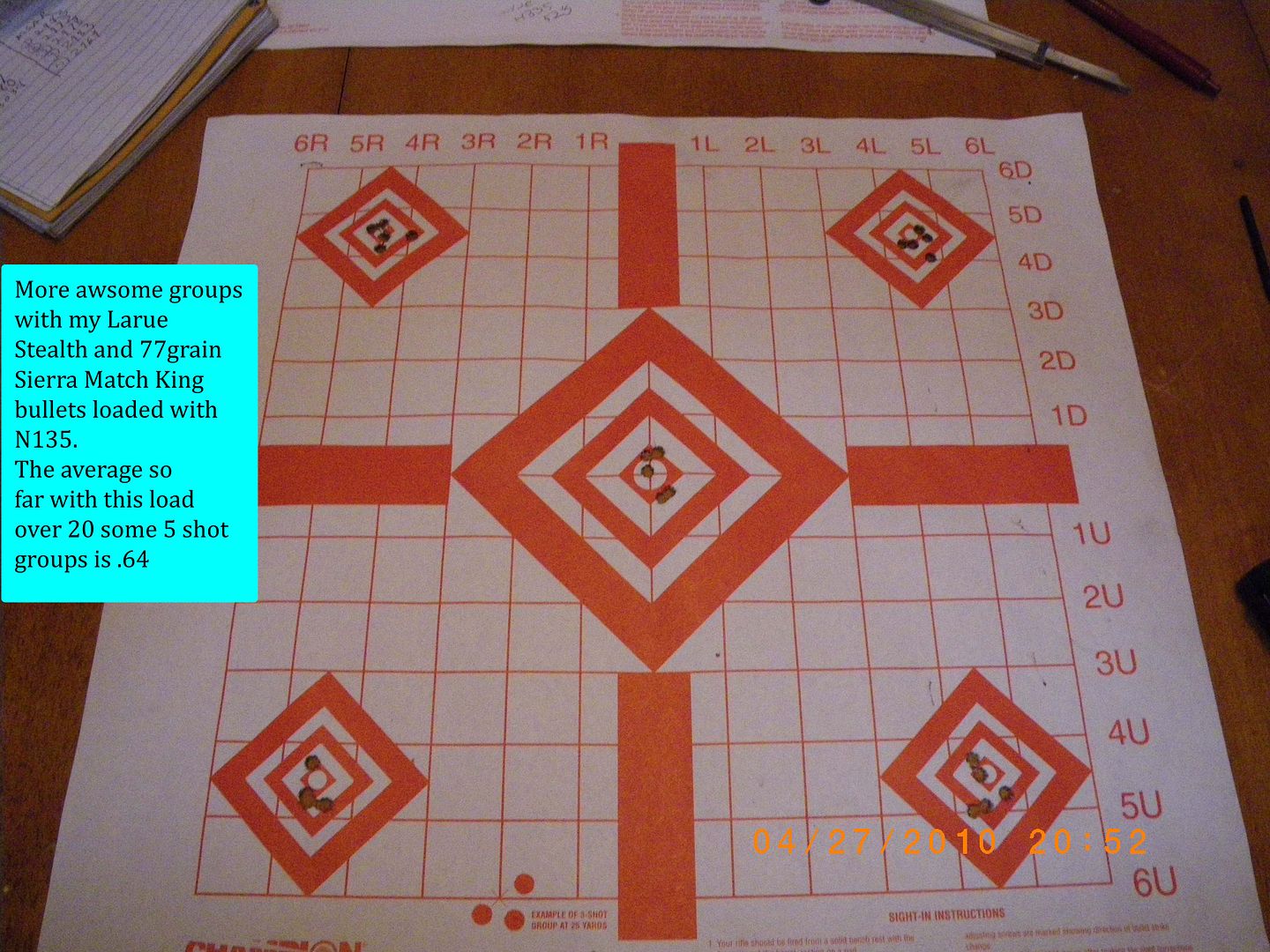Tell me how the same load in one rifle has a standard deviation of 9 and in another its huge
Noveske target

Larue target.

The shot that is low right on the lower right hand target had a different report almost like a hang fire but not that delayed. I am using new Lake City Brass. I have noticed that my Larue will some times push bullets in the case if I don't use a bit of crimp while my Noveske with M4 feed ramps does not have this issue. I used a small amount of crimp on these bullets. I was thinking that the feeding cycle in the larue could be causing some of my problems. Not really sure what is going on here.
Pat
Noveske target

Larue target.

The shot that is low right on the lower right hand target had a different report almost like a hang fire but not that delayed. I am using new Lake City Brass. I have noticed that my Larue will some times push bullets in the case if I don't use a bit of crimp while my Noveske with M4 feed ramps does not have this issue. I used a small amount of crimp on these bullets. I was thinking that the feeding cycle in the larue could be causing some of my problems. Not really sure what is going on here.
Pat





